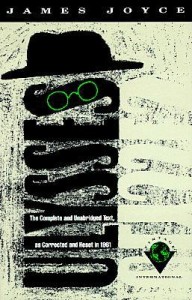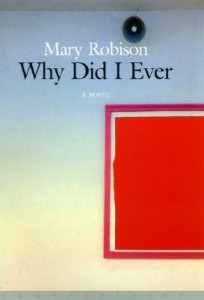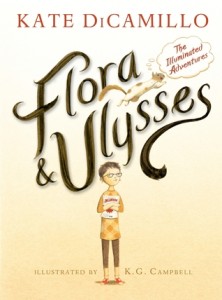“Wuthering Heights” (1939) Oberon/Olivier
Monday, November 24th, 2014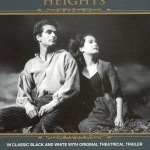
Because I am an obsessive nerd, I am preparing for my book discussion of Wuthering Heights by watching as many of its film/tv adaptations as I’m able. Also because I’m an obsessive nerd, I’m trying to watch them in order, guessing that later adapters were influenced by earlier ones.
I began with what is the earliest widely available, and perhaps best known, adaptation, Wuthering Heights (1939) directed by William Wyler, with Laurence Olivier as Heathcliff, and Merle Oberon as Cathy 1. The film doesn’t include the second generation, though “Mrs. Heathcliff” does appear in the opening scenes, sitting sullenly by the fire when Lockwood foists himself on Wuthering Heights.
Tagline: A servant in the house of Wuthering Heights tells a traveler the unfortunate tale of lovers Cathy and Heathcliff.
This adaptation has the same problem as many subsequent ones. The book shows the characters at three major stages: childhood, early teens, and late teens. Heathcliff and Cathy are approximately the same age. Cathy dies giving birth to little Cathy when she is only 19. Yet Olivier was 32 and Oberon 28 when the film was released, and they play Cathy and Heathcliff for the early/late teen parts. The iconic photo of them on the moors shows two adults, rather then the two approximately 15 year olds. The introduction to the Oxford World’s Classic edition of WH I read says that the scene it depicts isn’t in the book. I differ and argue that it does depict from the book, only with actors so much older that it skews the effect.
Here’s what didn’t work for me, things that tend to coincide with things that depart from the book. The actors in general were older than in the book, especially Lockwood (who is supposed to be a young city dandy) and Nellie (supposed to be the same age as Hindley). The movie retreats from the gruesome, violent image of Lockwood dragging the ghost’s wrist over broken glass, which I think helps set up the story as a ghost and horror tale as well as a love story. Heathcliff before he runs away is handsome and well-spoken, barely scruffed up.
What did work: I liked that they used the framing device of Lockwood and Nellie, and don’t mind that they omitted the second generation. Though it’s necessary to the book, a movie two hours or less has sacrifices to make, and if you’re only going to tell the story of Cathy and Heathcliff, then do it and do it well. To contrast, I felt the 1992 Kosminky adaptation with Binoche and Fiennes tried to cram too much in.
Olivier when he returns as Heathcliff is mesmerizing and handsome and compelling. I liked Oberon’s haughty spirit and ferocity as Cathy. This may have been because she despised Olivier. According to the IMDB trivia:
Merle Oberon and Laurence Olivier apparently detested each other. Legend has it that when William Wyler yelled “Cut!” after a particularly romantic scene, Oberon shouted back to her director about her co-star “Tell him to stop spitting at me!”
I also liked Niven as Edgar Linton. I thought he was both effete yet handsome and strong enough of an actor to carry off what is often a thankless role.
The more adaptations I watch, the more I like this one. It’s not perfect, none of them are, but it’s reasonably faithful to part of the book especially the wild spirit of it, the acting is strong, the look is distinct, and in general it’s a enjoyable and well-made film to watch.
For more Wuthering Heights goodness, including a good compare/contrast of many of the adaptations, visit The Readers Guide to Wuthering Heights UK.
And for all the Bronte news you can shake a stick at, visit Bronte Blog.
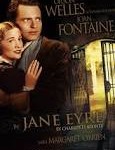 1943: screenplay by John Houseman and Aldous Huxley, starring Orson Welles (Mr. Rochester), Joan Fontaine (Jane), Agnes Moorehead (Mrs. Reed), and a VERY FAMOUS ACTRESS in her first, uncredited role. This one is entertaining to see Welles chew scenery and barely fall from his horse at all, but Fontaine is a disappointingly wimpy Jane.
1943: screenplay by John Houseman and Aldous Huxley, starring Orson Welles (Mr. Rochester), Joan Fontaine (Jane), Agnes Moorehead (Mrs. Reed), and a VERY FAMOUS ACTRESS in her first, uncredited role. This one is entertaining to see Welles chew scenery and barely fall from his horse at all, but Fontaine is a disappointingly wimpy Jane.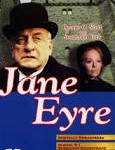 1970: starring George C. Scott and Susannah York. Music by John Williams, which was painful to listen to. Guess he needed those next 7 years to become awesome for Star Wars. York way too old and glam to play Jane, but George C was surprisingly decent, probably the least conventionally handsome of all the Rochesters. If I remember correctly, he was also the most physically scarred at the end–I think he was missing a hand. Some Rochesters barely looked any different.
1970: starring George C. Scott and Susannah York. Music by John Williams, which was painful to listen to. Guess he needed those next 7 years to become awesome for Star Wars. York way too old and glam to play Jane, but George C was surprisingly decent, probably the least conventionally handsome of all the Rochesters. If I remember correctly, he was also the most physically scarred at the end–I think he was missing a hand. Some Rochesters barely looked any different.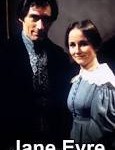 1983: 6 hours! with Zelah Clarke and Timothy Dalton. Zelah had the right look, but was too old for the part, and she was on the wimpy side. My favorite part was the scene after the almost wedding where she leaves her bedroom and Rochester is in the doorway. This adaptation was long and unthrilling in other ways, but that particular scene was outstandingly hot. Again, sorry, can’t recall, but if any of them had Rochester cross dressing as the gypsy, it was this one. Not sure it did, though.
1983: 6 hours! with Zelah Clarke and Timothy Dalton. Zelah had the right look, but was too old for the part, and she was on the wimpy side. My favorite part was the scene after the almost wedding where she leaves her bedroom and Rochester is in the doorway. This adaptation was long and unthrilling in other ways, but that particular scene was outstandingly hot. Again, sorry, can’t recall, but if any of them had Rochester cross dressing as the gypsy, it was this one. Not sure it did, though. 1996: directed by Franco Zeffirelli, starring William Hurt (Mr. Rochester), Charlotte Gainsbourg (Jane). I liked Gainsbourg as Jane, but detested Hurt as Rochester; he’s blond and American and just wrong.
1996: directed by Franco Zeffirelli, starring William Hurt (Mr. Rochester), Charlotte Gainsbourg (Jane). I liked Gainsbourg as Jane, but detested Hurt as Rochester; he’s blond and American and just wrong.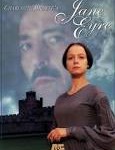 1997: Ciarán Hinds and Samantha Morton. The age difference, and Hinds not being conventionally handsome, and Morton as young and plain all worked in this one but I remember little of it. Hinds might have been the most bi-polar of the Rochesters.
1997: Ciarán Hinds and Samantha Morton. The age difference, and Hinds not being conventionally handsome, and Morton as young and plain all worked in this one but I remember little of it. Hinds might have been the most bi-polar of the Rochesters. 2006: 4 hour BBC miniseries of Ruth Wilson (currently in The Affair) and Toby Stephens (son of Maggie Smith!). A solid production, but the most memorable part of it for me was the ending: there was a huge family picture, with a miniature painting of St. John added like they do in reunion photos, plus Grace Poole was shown holding the baby. They redeemed surly drunk Grace Poole!
2006: 4 hour BBC miniseries of Ruth Wilson (currently in The Affair) and Toby Stephens (son of Maggie Smith!). A solid production, but the most memorable part of it for me was the ending: there was a huge family picture, with a miniature painting of St. John added like they do in reunion photos, plus Grace Poole was shown holding the baby. They redeemed surly drunk Grace Poole!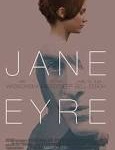 2011: directed by Cary Fukunaga, starring Mia Wasikowska (Jane Eyre), Michael Fassbender (Rochester) and Judi Dench as (Mrs. Fairfax). This was my favorite. Fassbender might be too handsome for Rochester, but he got the crazy just right. Wasikowska was pale and slight and young and very like Jane: strong willed and impressive. This was perhaps the only one that didn’t open with Jane as a girl, but rather with her wandering the moors, then jumps around in time. I didn’t care for Jamie Bell as St. John–not handsome enough, and very easy to resist in this version.
2011: directed by Cary Fukunaga, starring Mia Wasikowska (Jane Eyre), Michael Fassbender (Rochester) and Judi Dench as (Mrs. Fairfax). This was my favorite. Fassbender might be too handsome for Rochester, but he got the crazy just right. Wasikowska was pale and slight and young and very like Jane: strong willed and impressive. This was perhaps the only one that didn’t open with Jane as a girl, but rather with her wandering the moors, then jumps around in time. I didn’t care for Jamie Bell as St. John–not handsome enough, and very easy to resist in this version.